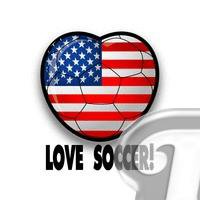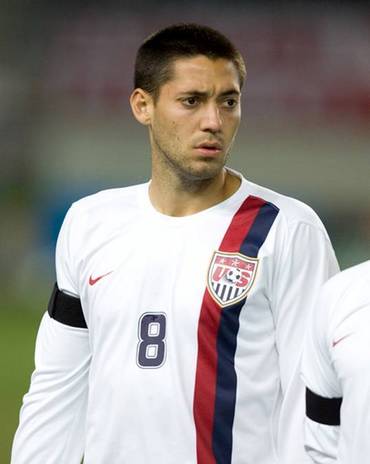An Overview of American Soccer History

The College Era, and Rules Consolidation, 1862-1875
The Working-Class and Immigrant Eras, 1875-1894
The First Dynasties, 1913-1921
The 1960's: The Birth of the American Soccer Renaissance
Outdoor soccer reaches a low: 1985
The Rebirth of Outdoor Soccer, 1988-1994
1994: The World Cup comes to America
From World Cup to Major League Soccer (1995-1996)

From World Cup to Major League Soccer (1995-1996)
By 1995, there were major changes occurring throughout all aspects of US Soccer. The National team had sent out upon a program of building on the world cup success and preparing for the next step. Major League Soccer set about the task of securing owner investors, sponsors and television contracts and signing players. The APSL, now retitled the A-league won recognition from FIFA as the United States' Division 2 league, and the USISL won designation as the third division league. With Major League Soccer recognized as the 1st division league, the USA finally had a working divisional system for the professional game. More importantly, the leagues finally decided to work together and cooperate in maintaining this system. The A-League and USISL worked out an agreement to act as a farm system for the MLS, and the MLS reached an agreement with the indoor NPSL regarding scheduling seasons and sharing of players. Avoiding the future women's basketball disaster, players were allowed to compete in both outdoor and indoor seasons. For once, the different major soccer powers were not fighting and trying to undercut each other. Only the two-year-old indoor Continental Indoor Soccer League (CISL) was on its own, but it kept largely to itself and did not try to interfere with the overall cooperation. The A-League was a small, unwieldy league with 7 teams spread across the entire country and Canada, but the USISL, which had committed itself to the bottom-up grassroots development strategy now had 85 teams in small to medium sized cities nationwide, and had split itself into professional and amateur divisions. The amateur division is known among fans as an unofficial "4th division".
The College game had been growing steadily, and was one of the largest college varsity sports. This was most evident in the rapid and sudden growth of women's college soccer. The women's game was really starting to come into its own both at the collegiate level and with the women's team (despite the disappointing 1995 World Cup final loss to Norway). This resulted in the USISL establishing a national women's league, which rapidly grew to over thirty teams, eventually splitting into elite and amateur divisions.
Major League Soccer established a unique single entity corporate structure with teams managed by Investors, existing as separate franchises, but with all player signings and salaries managed by the central league office that also handled player allocations and approved trades. This proved critical in the formative stages as the league ensured parity in the initial team lineup. The owner investors invested to the tune of $75,000,000, which was designed to cover expected operating losses for the first five seasons of the league. Ten corporate sponsors were signed up, and television contracts were signed with ABC, ESPN, ESPN2 and Univision. To promote the development of American players, the teams had a limit of five foreigners per team, and 15 Americans. In addition, there was a salary cap of $1,250,000 per team and a maximum player salary of $175,000 (excepting sponsorship deals with 4 allocated marquee players per team). This ensured Americans would have adequate playing time to develop their talent and avoid the mistakes of the NASL with regard to spiraling salaries for foreigners with Americans warming the bench. The MLS signed marquee players and held tryouts for others, establishing a signee list of over 250 players when the February 1996 draft took place. This player pool was a mixture of foreign stars, US National team players (The USSF Training program was shut down, to be replaced by MLS), US stars playing abroad and in the A-League, as well as other A-League players, USISL players, a few amateurs, and some indoor veterans from the NPSL and CISL. In addition, a collegiate draft was held as well as a supplemental free-agent draft after the draft from the Player Pool. Overall, the quality of players signed was better than many had expected, with a surprising majority of national team members signed to the league. This included many who had been able to land playing positions overseas as a result of their reputation and World Cup performances.
The National Team played a series of exhibitions, before having an amazing performance during the summer, winning the US Cup against very strong opponents, and then stunning the world by making it to the semifinals in the Copa America, defeating Argentina 3-1, Mexico 1-0, and nearly tying World Cup champion Brazil (who ultimately won 1-0). Argentina had foolishly rested some of their starters, expecting the US game to be a cakewalk. This upset showed the world the Americans were to be taken seriously. This triumph led to Steve Sampson being named permanent coach, and he had turned in the best performance ever for an American born coach, putting to rest the myth than Americans were incapable of bringing coaching success to the national level.
The Internet became a major factor in American Soccer at this time. Netizens took to the internet early and congregated in newsgroups, email lists, and web pages sharing information, collecting statistics and creating informational forums to counteract the dearth of soccer coverage in the media. This year also saw the birth of the first supporters club for the national team. The idea actually took root during the 1994 world cup when three fans at the 1994 world cup were accidentally introduced when Mark Wheeler, a doctoral student at Carnegie-Mellon, spilled his soda on Marc Spacone, a coach at SUNY-Buffalo, who was with his friend John Wright. The three of them got to talking and bemoaned the fact that even on their home turf, the team had to face stadium crowds that were mostly rooting for their opposition, an effect of the still strong ethnic component of the game in the US. They hatched the idea of a club whose members would go to all national team home games, sit together with logo shirts, drums, instruments, songs and cheers, and work to develop a strong tradition of American fans wildly supporting the American team in the European tradition (minus the hooliganism and poor sportsmanship). The club was conceptualized, organized and promoted on the soccer internet groups, and Sam's Army was born. Their first game, the beginning of the US Cup 1995 was a resounding success, and Sam's Army has appeared at every game since, with crowds ranging as high as 900 for a game. Sam's Army now has over 5,000 members nationwide, and even overseas.